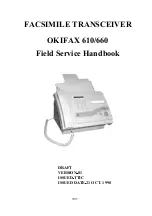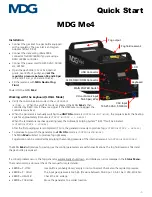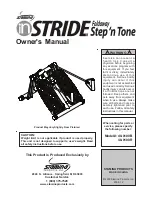
EYELET STITCH...................................................................................................................................64
DARNING STITCH...........................................................................................................................65-66
NARROW HEMMING ...........................................................................................................................67
QUILTING ........................................................................................................................................68-71
ATTACHING THE EDGE/ QUILTING GUIDE ......................................................................................72
CORDING..............................................................................................................................................73
FAGOTING............................................................................................................................................74
GATHERING....................................................................................................................................75-76
SATIN STITCH SEWING ......................................................................................................................77
SCALLOP STITCH ...............................................................................................................................78
SMOCKING...........................................................................................................................................79
TWIN NEEDLE SEWING .................................................................................................................80-81
ELONGATION.......................................................................................................................................82
MIRROR IMAGE ...................................................................................................................................83
MEMORY FUNCTION......................................................................................................................84-87
WARNING FUNCTIONS..................................................................................................................88-91
MAINTENANCE...............................................................................................................................92-93
TROUBLESHOOTING.....................................................................................................................94-95
STITCH REFERENCE CHART......................................................................................................96-107
To adjust the evenness of darning stitch.....................................................................................66
Patchwork sewing .......................................................................................................................68
Hand-look quilting stitch ..............................................................................................................68
Decorative patchwork stitching....................................................................................................69
Free motion darning, embroidery & monogramming..............................................................70-71
Single cording..............................................................................................................................73
Triple cording...............................................................................................................................73
Scallop hem.................................................................................................................................78
Scallop edging.............................................................................................................................78
Combining patterns or letters .................................................................................................84-85
Adding patterns or letters ............................................................................................................85
Editing patterns ...........................................................................................................................86
Clearing patterns or letters ..........................................................................................................86
Recalling and sewing the memorized pattern .............................................................................87
Warning animation message display .....................................................................................88-89
Instruction animation message display .......................................................................................90
Warning beeping sound ..............................................................................................................91
Beeping sound ............................................................................................................................91
Cleaning the LCD screen ............................................................................................................92
Cleaning the sewing machine surface.........................................................................................92
Cleaning the hook ..................................................................................................................92-93
DECORATIVE TECHNIQUES
DECORATIVE PATTERNS
APPENDIX
5
INSTRUCTIONS
CONTENTS







































